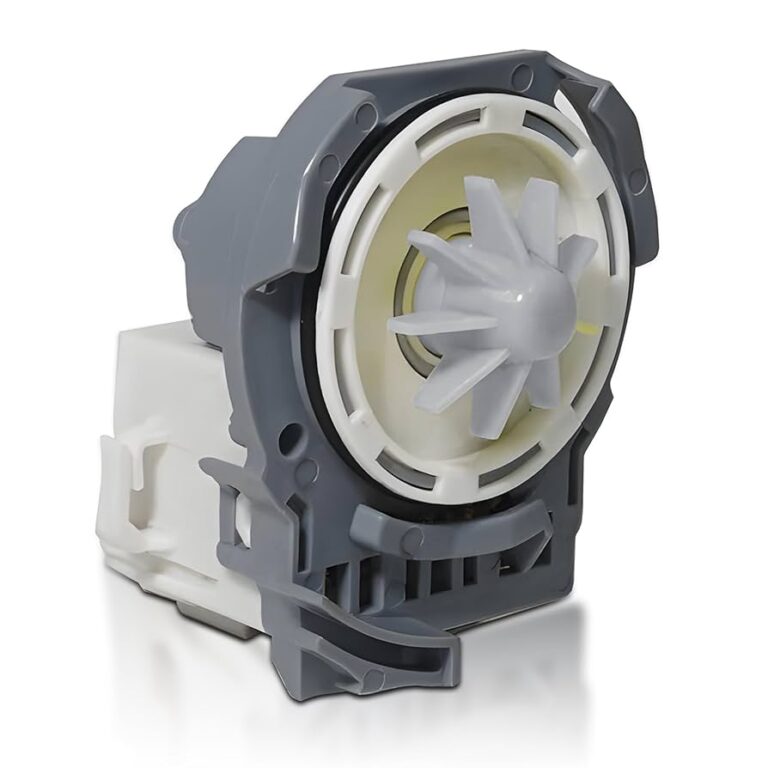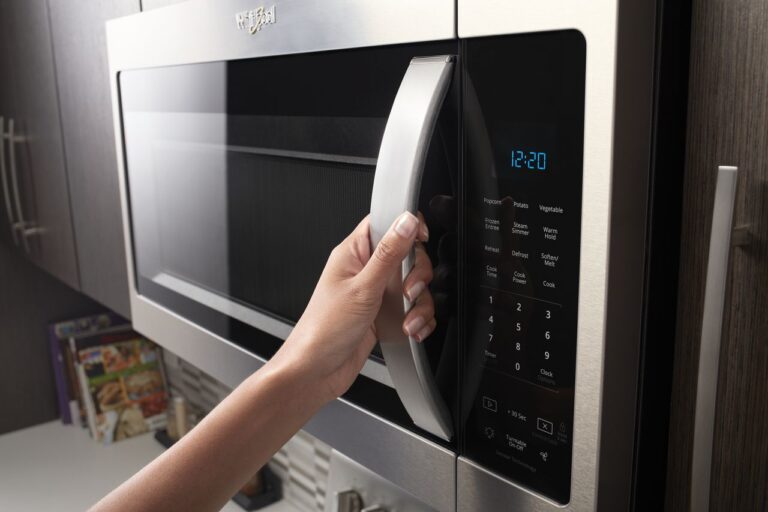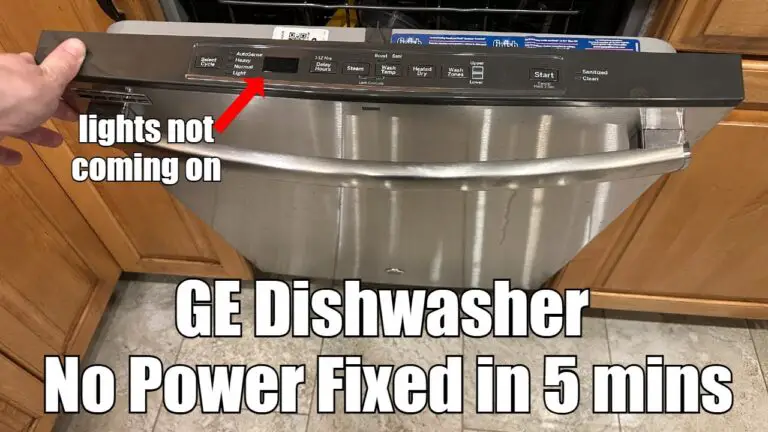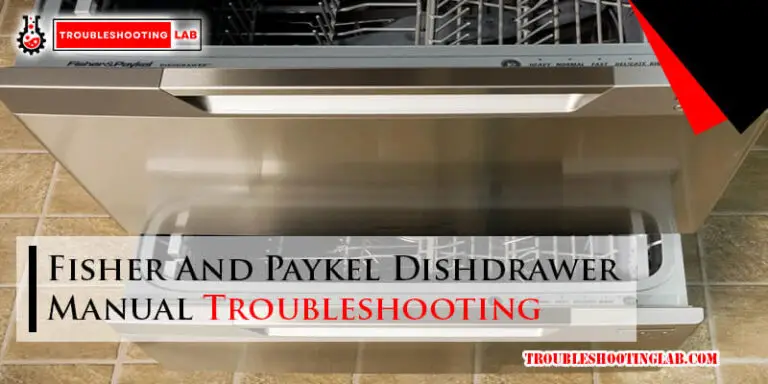Kismile Ice Maker Troubleshooting: Quick Fixes Guide
Kismile Ice Maker Troubleshooting: Your Quick Guide to Fixing Common Issues Is your Kismile ice maker acting up? Maybe it’s not making enough ice, or it’s stopped working altogether.
Don’t worry—you’re not alone, and the good news is that most issues are easier to fix than you think. With a little guidance, you can quickly get your ice maker back to doing what it does best: keeping your drinks chilled and your gatherings stress-free.
In this guide, we’ll walk you through simple troubleshooting steps to solve the most common Kismile ice maker problems. Whether it’s a minor hiccup or a more puzzling issue, you’ll find practical tips and solutions tailored just for you. By the end of this article, you’ll feel confident and ready to tackle the problem head-on. Let’s dive in and get your ice maker running smoothly again—you deserve hassle-free ice whenever you need it!
Common Issues With Kismile Ice Makers
Kismile ice makers are reliable, but problems can occur occasionally. Understanding these common issues helps ensure smooth operation and proper maintenance.
Below are some frequent problems users face and tips to resolve them. Keep reading to troubleshoot and maintain your ice maker effectively.
1. Ice Maker Not Producing Ice
An ice maker that stops producing ice can be frustrating. Check if the water supply is connected and turned on. Make sure the water reservoir is filled to the correct level. Inspect the power cord to ensure it’s plugged in securely. Clean the machine if mineral buildup is blocking water flow.
2. Ice Cubes Are Too Small Or Misshapen
Small or irregular ice cubes may indicate a water flow issue. Confirm the water reservoir is clean and free of debris. Inspect the water inlet valve for any blockages or leaks. Adjust the ice-making cycle for the correct freezing time. Regular cleaning can help prevent this problem from recurring.
3. Ice Maker Is Leaking Water
Water leaks can damage your machine if not addressed promptly. Check if the water reservoir is overfilled or improperly positioned. Inspect the drain plug to ensure it is tightly secured. Examine the machine’s hoses and connections for any visible cracks. Replace damaged parts to stop the leakage and prevent further issues.
4. Ice Maker Making Loud Noises
Unusual noises may signal a mechanical or operational problem. Ensure the ice maker is placed on a flat, stable surface. Remove any debris or ice buildup from the internal components. Clean the fan and vents to improve airflow and reduce noise. If the noise persists, consult the user manual for further guidance.
5. Ice Tastes Or Smells Bad
Bad-tasting ice often results from dirty water or machine components. Clean the water reservoir and ice tray with a mild detergent. Replace the water with fresh, filtered water for better ice quality. Deep clean the entire machine to remove lingering odors. Regular maintenance can ensure your ice always tastes fresh and clean.
Ice Maker Not Turning On
An ice maker that doesn’t turn on can disrupt your daily routine. It can be frustrating, but the issue is often easy to resolve. Addressing this problem involves checking a few components step-by-step.
Checking Power Connections
Start by ensuring the ice maker is plugged into a working outlet. Sometimes, loose or damaged plugs can interrupt the power supply. Examine the power cord for any visible damage or wear. Replace the cord if it looks frayed or broken.
Test the outlet by plugging in another device to confirm it works. Reset the circuit breaker if there is no power. Faulty outlets or tripped circuits can prevent the ice maker from turning on.
Inspecting The Control Panel
Check if the control panel lights or indicators are functioning. This helps identify whether the ice maker is receiving power. If the lights are off, the control panel might be damaged.
Inspect the control buttons for dirt or residue. Sticky buttons can interfere with normal operation. Clean them gently with a damp cloth to restore functionality. If the panel remains unresponsive, consult the user manual for reset instructions.
Ice Not Freezing Properly
If your Kismile ice maker isn’t freezing properly, it can be frustrating. This issue could stem from a few different factors. By identifying the root cause, you can often fix it yourself. Below are some common troubleshooting steps to get your ice maker working again.
Verifying Water Supply
A consistent water supply is essential for ice formation. Start by checking the water line for any kinks or clogs. Ensure the water inlet valve is fully open to allow proper flow. If the water filter is old, replace it to avoid blockages. Proper water flow ensures the ice trays fill correctly.
Adjusting Temperature Settings
The temperature setting plays a key role in freezing. Check if the ice maker’s temperature is set too high. Lower it slightly to encourage faster freezing. Ensure the ice maker is not placed near heat sources or direct sunlight. Proper cooling ensures ice freezes efficiently.
Ice Cubes Are Small Or Misshaped
Ice cubes that are small or misshaped can be frustrating. This issue is common and often easy to resolve. Small or irregular ice cubes may result from water quality, maintenance, or machine settings. Addressing these factors can improve the performance of your Kismile ice maker.
Cleaning The Water Reservoir
A dirty water reservoir can affect ice cube formation. Sediment, dust, or debris in the reservoir can block the water flow. This causes the ice to freeze unevenly, leading to small or misshaped cubes. To fix this, clean the reservoir regularly.
Start by unplugging the ice maker. Remove the reservoir and empty all water. Use warm water mixed with mild dish soap for cleaning. Scrub gently to remove any buildup. Rinse thoroughly to avoid leaving soap residue. Make sure the reservoir is fully dry before reassembling it.
Examining Water Quality
Water quality plays a crucial role in ice cube formation. Hard water or water with impurities can lead to smaller ice cubes. Minerals in hard water can also clog the system over time. Using filtered or distilled water can prevent these issues.
If your area has hard water, consider using a water softener. Check your water filter in the ice maker, if applicable. Replace it if it’s clogged or outdated. Clean water ensures proper ice production and enhances the machine’s lifespan.
Ice Maker Not Dispensing Ice
Having an ice maker that refuses to dispense ice can be frustrating, especially when you’re hosting guests or simply craving a cold drink. The good news is, most issues with a Kismile ice maker not dispensing ice can be resolved with a little troubleshooting. Let’s break it down step by step so you can get your ice maker back on track.
Clearing Ice Blockages
Ice blockages are a common culprit when your ice maker isn’t dispensing properly. Check for any ice chunks or frost buildup around the dispenser opening. These blockages can prevent ice from falling freely into your glass.
- Start by unplugging the ice maker to avoid any accidents.
- Use a plastic utensil or a soft cloth to gently remove any stuck ice. Avoid sharp tools, as they may damage the dispenser.
- If frost buildup is the issue, let the ice maker sit unplugged for a few minutes to thaw.
Once cleared, plug the machine back in and test the dispenser. Did it work? If not, let’s look at the next step.
Inspecting The Ice Tray
The ice tray is where all the magic happens—if it’s not functioning properly, ice won’t dispense as it should. Remove the tray and inspect it for cracks, stuck ice, or debris.
- Take out the tray carefully and wash it in warm, soapy water. This removes dirt and ensures smooth operation.
- Check for any signs of damage, such as warping or cracks. If the tray is broken, replacing it may solve the issue.
- Before reinstalling the tray, ensure it’s fully dry. Moisture can lead to new blockages.
Reinsert the tray, making sure it aligns perfectly with the mechanism. Test the ice maker again. Is it dispensing now?
Sometimes, the smallest details make the biggest difference. By clearing blockages and inspecting the ice tray, you’re addressing two of the most common issues. If your ice maker is still acting up, it might be time to look deeper into the mechanics or contact Kismile support.

Credit: kismile.com
Strange Noises From The Ice Maker
Strange noises from your Kismile ice maker can be frustrating. These sounds may indicate a minor issue or a potential problem. Understanding the source of the noise is the first step to fixing it. Regular maintenance and attention can help prevent these disturbances.
Identifying Source Of Noise
Start by pinpointing where the noise is coming from. Check if the noise happens during specific cycles, such as ice dropping or water filling. Listen closely to determine if the sound comes from the motor, fan, or other components. Unusual sounds may include clicking, buzzing, or rattling.
Inspect the ice maker’s surroundings. Ensure it’s on a level surface and not vibrating against nearby objects. Sometimes, external factors like placement can cause unnecessary noise. Removing obstructions or adjusting the position can resolve the issue quickly.
Tightening Loose Components
Loose parts can often cause rattling or vibrating noises. Carefully examine screws, panels, and fittings inside and outside the unit. Use a screwdriver to tighten any loose screws or bolts. Securely fasten the ice maker’s casing and internal components.
Check the fan blades and motor for looseness. A loose fan blade may create a whirring or clicking sound. Tighten it gently to avoid damaging the blade. Regularly inspecting and securing these parts keeps the ice maker running smoothly.
Water Leaks Around The Ice Maker
Finding water pooling around your Kismile Ice Maker can be frustrating. It’s not just about the mess—it’s also a sign that something may not be working as it should. The good news? Most water leaks are simple to fix once you pinpoint the cause.
Checking For Hose Disconnections
Start by examining the water supply hose. This is the tube that carries water into your ice maker. If it’s loose or disconnected, water can leak out easily.
- Look behind your ice maker and check if the hose is securely attached to the inlet valve.
- Gently tug on the hose; it shouldn’t pop off or feel wobbly.
- If it’s loose, tighten the connection with your hands or a wrench. Be careful not to overtighten, as this could damage the threads.
Have you ever noticed water dripping only when the machine is running? That’s a big clue the hose might be the culprit. Fixing it takes minutes, and you’ll immediately see the difference.
Inspecting For Cracked Components
Sometimes, the issue isn’t the hose itself but the parts it connects to. Cracks in the inlet valve or other plastic components can cause leaks over time. These cracks are often hard to spot but crucial to fix.
- Turn off your ice maker and carefully inspect the inlet valve and other plastic parts for any visible damage.
- Use a flashlight to spot hairline cracks. Even tiny cracks can lead to significant leakage.
- If you find damage, replace the broken component immediately. Replacement parts are usually affordable and easy to find online.
Neglecting cracked parts can lead to bigger problems down the road. Why wait for a small issue to grow into a major headache?
Next time you see water leaking around your Kismile Ice Maker, remember to start with these simple checks. A little troubleshooting can save you time, money, and unnecessary stress.
Routine Maintenance Tips
Regular maintenance ensures your Kismile ice maker works efficiently. Neglecting upkeep can cause performance issues and shorten its lifespan. Follow these simple tips to keep it running smoothly and producing fresh ice.
Regular Cleaning Schedule
Clean the ice maker every two weeks to prevent dirt buildup. Unplug the machine and remove all ice and water from the compartments. Use mild soap and warm water to wipe down the interior and exterior surfaces. Avoid harsh chemicals that can damage the material. Rinse thoroughly to remove soap residues before drying with a clean cloth. Regular cleaning keeps your ice fresh and prevents odor.
Replacing Filters
Change water filters every six months to maintain ice quality. Check the user manual for your ice maker’s specific filter type. Remove the old filter carefully to avoid spilling water. Install the new filter securely and ensure it fits properly. A clean filter improves water flow and prevents contaminants. This simple step keeps your ice maker performing at its best.
When To Seek Professional Help
Sometimes, no matter how handy you are, your Kismile ice maker may face issues that go beyond simple fixes. While troubleshooting on your own is a great start, there are moments when professional expertise is the safest and most effective option. Knowing when to step back and call for help can save you time, frustration, and potentially costly mistakes.
Recognizing Persistent Issues
If your ice maker continues to malfunction despite trying all the basic troubleshooting steps, it’s time to take a closer look. For example, if the machine consistently fails to produce ice or leaks water, there might be an internal issue like a damaged pump or a faulty cooling mechanism. Electrical problems, such as the unit not powering on even after checking the outlet, are also red flags that require professional attention.
Unusual noises are another sign you shouldn’t ignore. Grinding or knocking sounds could indicate a mechanical problem that might worsen if left unattended. If the problem persists for more than a day or two, it’s better to err on the side of caution and get an expert involved.
Finding Authorized Repair Services
Not all repair services are created equal, so it’s important to find someone qualified to handle your Kismile ice maker. Check the user manual or the manufacturer’s website for a list of authorized repair centers. These professionals are trained specifically for Kismile products and have access to genuine replacement parts.
If you can’t find an authorized center nearby, look for local appliance repair technicians with a strong reputation. Read online reviews and ask for recommendations from friends or family. Always confirm that the technician is experienced with ice makers to avoid unnecessary risks.
Before scheduling a repair, ask for an estimate. Knowing the potential cost upfront can help you decide whether a repair is worth it or if replacing the unit might be a better option. Make sure to keep your receipt and any warranty information handy, as these can sometimes reduce repair costs significantly.
Have you ever tried fixing something yourself, only to realize it was a mistake? Sometimes calling in a professional is the smartest choice you can make.

Credit: manuals.plus
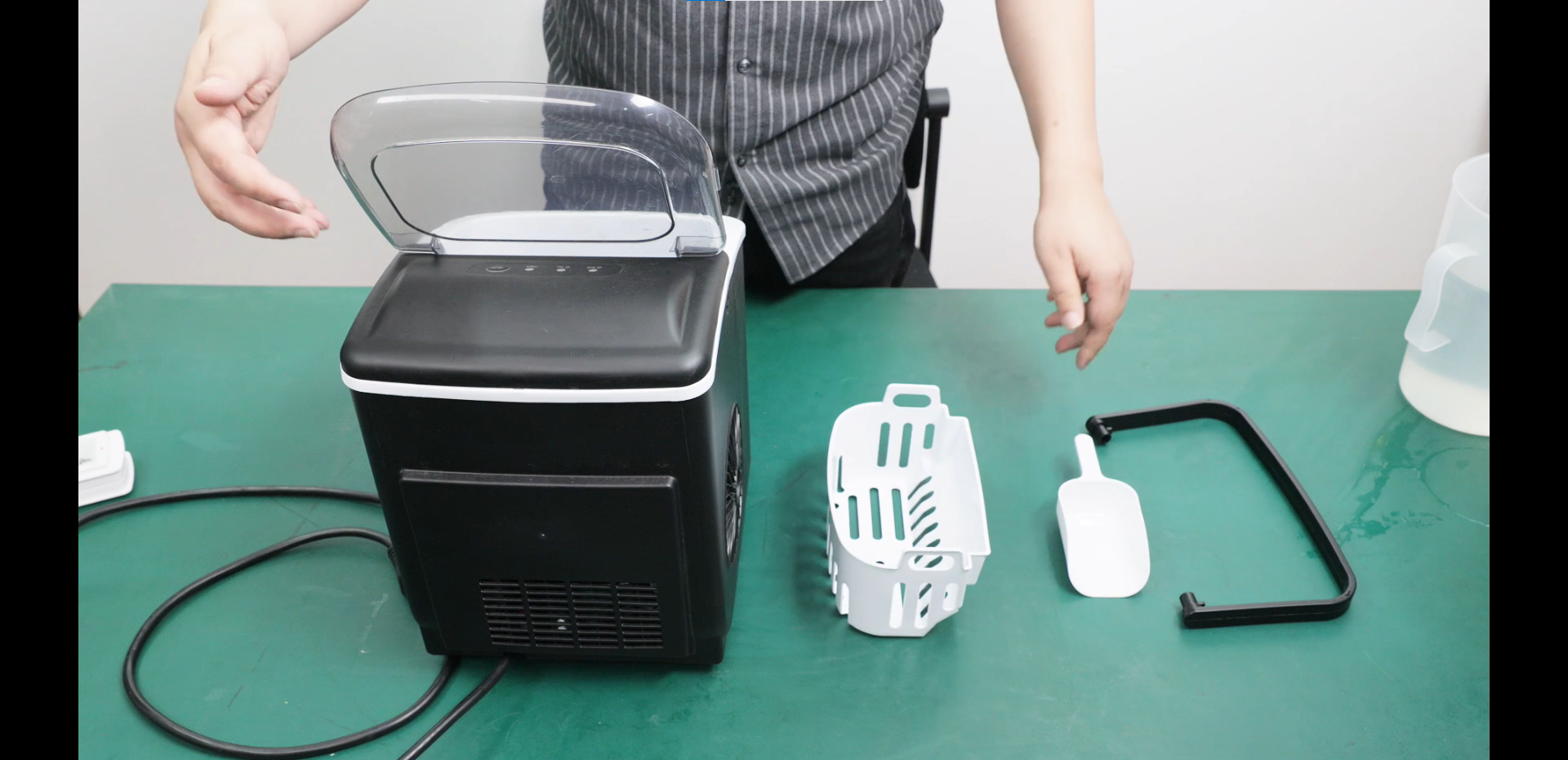
Credit: kismile.com
Conclusion
Troubleshooting your Kismile ice maker doesn’t have to be complicated. Start by identifying common issues like power, water supply, or cleaning needs. Regular maintenance can prevent many problems before they arise. Always follow the user manual for proper guidance. If issues persist, contacting customer support might be your best option.
A well-maintained ice maker ensures consistent performance and longer lifespan. Stay proactive, and you’ll enjoy hassle-free ice for years. Simplifying the process makes troubleshooting less stressful and more effective. Keep these tips handy to address problems quickly and confidently.

